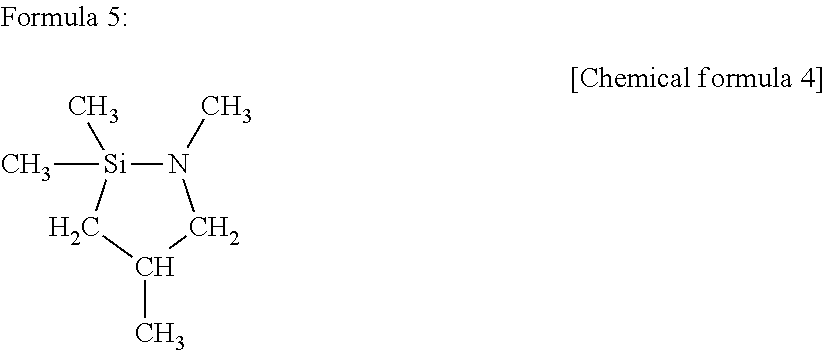Toner for developing electrostatic images
a technology toners, applied in the field of toners for developing electrostatic images, can solve the problems of deteriorating image quality, reducing initial charging speed, and more likely to occur charge changes, and achieve excellent initial charging speed, stable charging ability and flowability, and the effect of imparting charge stability and flowability to the toner
- Summary
- Abstract
- Description
- Claims
- Application Information
AI Technical Summary
Benefits of technology
Problems solved by technology
Method used
Image
Examples
production example 1
[0206]623.7 g of methanol, 41.4 g of water and 49.8 g of 28% ammonia water were charged in a 3 L glass reactor provided with an agitator, a dropping funnel and a thermometer, and mixed. The temperature of the mixed solution was adjusted to be 35° C.
[0207]While agitating the mixed solution in which the temperature was adjusted, a mixture of 1205.0 g of tetramethoxysilane and 100.6 g of tetrabutoxysilane, and 418.1 g of 5.4% ammonia water were gradually added to the mixed solution at the same time. The mixture of tetramethoxysilane and tetrabutoxysilane was added dropwise for 6 hours and the 5.4% ammonia water was added dropwise for 5 hours, respectively.
[0208]Even after finishing the dropping, the hydrolysis was performed by further continuing 0.5-hour agitation. Thus, a suspension of hydrophilic spherical colloidal silica particles was obtained.
[0209]Next, an ester adapter and a condenser were mounted on the 3 L glass reactor, and the temperature of the obtained suspension was raise...
production example 2
[0215]Spherical colloidal silica particles B2 of Production example 2 were produced similarly as Production example 1 except that the kind of the silane compound used as the hydrophobicity-imparting treatment agent was changed from octadecyltriethoxysilane represented by the above formula 6 to n-octyltriethoxysilane (product name: Z-6341; manufactured by Dow Corning Toray Co., Ltd.) represented by the following formula 8. The characteristics of the obtained spherical colloidal silica particles B2 are shown in Table 1.
production example 3
[0216]Spherical colloidal silica particles B3 of Production example 3 were produced similarly as Production example 1 except that the kind of the silane compound used as the hydrophobicity-imparting treatment agent was changed from octadecyltriethoxysilane represented by the above formula 6 to dimethyloctadecylchlorosilane (product name: LS-6790; manufactured by Shin-Etsu Chemical Co., Ltd.) represented by the following formula 9, and 1.13 g of triethylamine represented by the following formula 10 was further added. The characteristics of the obtained spherical colloidal silica particles B3 are shown in Table 1.
PUM
 Login to View More
Login to View More Abstract
Description
Claims
Application Information
 Login to View More
Login to View More - R&D
- Intellectual Property
- Life Sciences
- Materials
- Tech Scout
- Unparalleled Data Quality
- Higher Quality Content
- 60% Fewer Hallucinations
Browse by: Latest US Patents, China's latest patents, Technical Efficacy Thesaurus, Application Domain, Technology Topic, Popular Technical Reports.
© 2025 PatSnap. All rights reserved.Legal|Privacy policy|Modern Slavery Act Transparency Statement|Sitemap|About US| Contact US: help@patsnap.com



